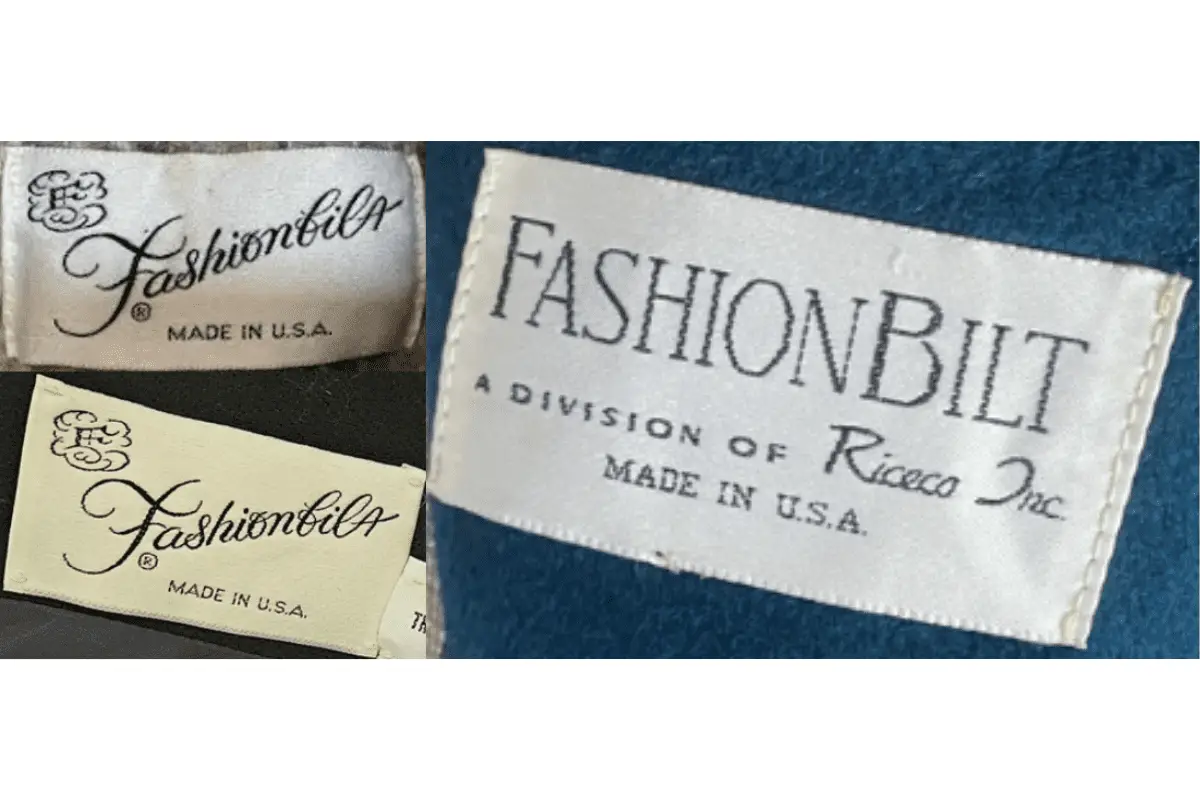Fashionbilt Garment Company, founded in 1924 by Polish immigrant Meyer Present, is a name that resonates with vintage fashion enthusiasts and collectors alike. This Kansas City-based brand built its reputation on producing high-quality, classic women’s coats and suits that were designed to stand the test of time. From its humble beginnings, Fashionbilt quickly grew into one of the most respected names in American outerwear, creating investment pieces that were not only stylish but also durable—a testament to the brand’s commitment to craftsmanship and quality.
Throughout its history, Fashionbilt has been home to some of the most talented designers in the industry. In the 1950s, David Salvay brought his creative vision to the company, helping to cement Fashionbilt’s reputation for timeless elegance. However, it was during the mid-1960s to 1983 that the brand truly flourished under the direction of Eugene Lebovitz, a Czech immigrant and Holocaust survivor. Lebovitz, a master tailor and pattern-maker, brought a level of sophistication and precision to Fashionbilt that set the brand apart from its competitors. His designs were not only revered in Kansas City but also caught the attention of the New York fashion scene, further elevating Fashionbilt’s status.
By the mid-1970s, Fashionbilt had grown to become one of the ten largest coat manufacturers in the United States. However, the changing landscape of the fashion industry in the 1980s, marked by increased competition from imported garments and the decline of small-town retail, posed significant challenges. Despite these obstacles, Fashionbilt continued to produce coats under the stewardship of Riceco, another Kansas City garment maker, until its eventual closure in 1993. Today, Fashionbilt’s legacy lives on through the vintage pieces that continue to be cherished by collectors, each garment telling the story of a brand that was once a cornerstone of American fashion.
60s Fashion
How to tell if Fashionbilt is vintage from the logo
Fashionbilt, a brand known for its classic and timeless designs, has evolved its logo over the decades to reflect changing fashion trends and branding strategies. The logos have transitioned from ornate and cursive designs to more modern, streamlined fonts, which can help in identifying the era of a particular Fashionbilt piece.
1950s to 1990s Fashionbilt logo
- The logo from this era features a cursive script that is elegant and flowing, typical of mid-century design aesthetics.
- The script is decorative, with the letters connected in a continuous flow, reflecting the brand’s emphasis on sophistication and classic style.
- This version of the logo is often found on vintage garments that showcase the brand’s heritage and long-standing reputation in the fashion industry.

1950s to 1990s Fashionbilt logo
1980s to 1990s Fashionbilt logo
- In this period, the logo shifted to a more modern, sans-serif typeface, representing a move towards a contemporary and clean aesthetic.
- The text is bold and straightforward, with each letter standing distinct and separate from the others, contrasting with the earlier cursive style.
- This logo is indicative of Fashionbilt’s adaptation to the minimalist trends that were popular in the late 20th century, signaling a shift in brand identity towards simplicity and modernity.

1980s to 1990s Fashionbilt logo
How to tell if Fashionbilt is vintage from the tags
Fashionbilt has seen significant evolution in its branding and tag design over the decades. From the 1950s through the 1980s, the tags used by Fashionbilt reflected the changing styles and branding preferences of the era. Each decade brought with it distinct design elements, from the elegant script used in the 1950s to the more modernized fonts seen in the later years. Identifying a vintage Fashionbilt garment involves carefully examining these tags to understand which era they represent.
Need assistance with vintage tags or labels? Upload a picture on our vintage tag identification page, and we’ll help you out!
1950s vintage Fashionbilt tags
- Elegant cursive script featuring the brand name “Fashionbilt.”
- Tags often include the phrase “Made in U.S.A.” indicating the manufacturing location.
- The tag’s design is simple, with a focus on the brand name, sometimes accompanied by an ornate emblem or monogram.

1950s Fashionbilt tags
1960s vintage Fashionbilt tags
- Continuation of the elegant cursive script, but with a slightly more modernized look.
- The inclusion of “The Well Made Garment” slogan becomes more prominent.
- Tags typically have a more refined finish, indicating a higher-end production quality.

1960s Fashionbilt tags
1970s vintage Fashionbilt tags
- Tags from this era start to show bolder fonts, though still maintaining the cursive style for the brand name.
- “The Well Made Garment” remains a key tagline, reinforcing the brand’s focus on quality.
- Some tags may include additional product information or care instructions, reflecting the era’s growing consumer awareness.

1970s Fashionbilt tags
1980s vintage Fashionbilt tags
- The brand name is still presented in a cursive script, but the overall tag design is more modern and minimalist.
- Tags from this era may include more specific manufacturing details, such as “A Division of Riceco Inc.” indicating corporate changes.
- The “Made in U.S.A.” tagline is prominently featured, reflecting the era’s emphasis on domestic manufacturing.

1980s Fashionbilt tags





Thank you for your sharing. I am worried that I lack creative ideas. It is your article that makes me full of hope. Thank you. But, I have a question, can you help me?